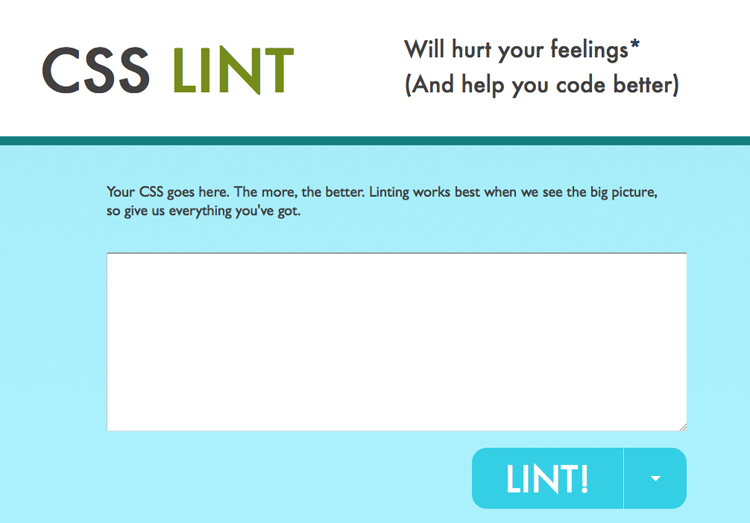

#CSS PROCSSOR CODE#
But in reality, most CSS preprocessors can make the process of writing code on a CSS file faster and more efficient without interrupting your workflow in a maintainable manner. Some web developers believe that preprocessors only add extra work to their workflow and are time-consuming. This is where CSS preprocessors come into the frame.ĬSS preprocessors act as the mediator of your preprocessor file and the compiled CSS code, which is then displayed on the client side. Moreover, you cannot define variables, do mathematical operations, and use helpful functions using normal CSS code alone. For instance, it is difficult to display the same web page content without the vendor-prefixed CSS code in every browser. CSS is limited on its own and doesn't have the default capabilities to consolidate styles and values, making reducing the repetition of common styles and code for abstractions almost impossible.ĬSS also depends on browser capability not all browsers support every CSS feature. For CSS experts, writing functional CSS code will be the priority, and code readability comes next.Īs you add more CSS code, CSS files grow and become disorganized as the development process advances.

Aside from adapting to new complex CSS properties, there are several times when developers write repetitive CSS codes, which can be inefficient and time-consuming. Nevertheless, these new rules have increased the complexity of CSS code, making it more challenging to maintain at times. Like HTML, CSS has also gone a long way from simple table-based CSS rules to making responsive elements and more, now known as CSS3. CSS rules cover many aspects of design, such as altering the colors and position of the elements and adding creative animations to a web page. It makes web page content more fascinating than just plain pieces of text and content. Cascading Style Sheets or CSS is the style sheet language responsible for adding a website's design or look and feel. It is impossible to imagine how a modern web design unfolds without using CSS. Needless to say, HTML would be dull without CSS. These semantic elements are supported by all major modern browsers and cover many aspects of webpage content, such as graphics, media, and forms. Along with the new version comes the new semantic elements, which were added for the benefit of many web developers. Over the years, it has evolved from table-style structure-based to a detailed division-style structure-based markup, which we now know as HTML5. LESS processing overrules the CSS3 Vendor Prefixing feature, you must use one or the other.The HyperText Markup Language or HTML has been the standard markup language in placing structure and content on a web page. css and include it in a CSS processing list. To process a file as LESS, simply name the file.

border-radius, box-shadow, column-count, column-rule, column-gap, transition, user-select: All automatically are converted into -o, -ms, -moz, and -webkit prefixes along with the non-prefixed version.Accepts two parameters with the first being the top color and the second being the bottom color. background-gradient: - this property isn't standard CSS but rather a quick way to set a gradient background.$bigtree = array(īigTree supports automatic vendor prefixing for certain CSS3 properties: Now, to provide the values to your CSS, we will edit /templates/config.php with the following code (the array should exist in the default config, just add the keys you need). Let's take the following bit of CSS as an example. Variables are used in CSS just like they are used in PHP through the $ indicator. To turn on CSS minifying, set $bigtree in your /templates/config.php file to true. To turn on automatic CSS3 Vendor Prefixing, set $bigtree in your /templates/config.php file to true. Variables are processed after vendor prefixing and LESS processing. If any of the files changes, the cache will be destroyed and users will be served a new copy. In the below example, we're going to create by including reset.css, master.less, and ie.css $bigtree = array(įor this example, site.css will first include reset.css, then a LESS processed master.less, and then ie.css at the bottom of the file. To create a processed CSS file you'll need to add arrays to your configuration variable. BigTree also supports the LESS preprocessor. BigTree comes with a built in CSS preprocessor with support for variables and automatic vendor prefixing of certain CSS3 properties.


 0 kommentar(er)
0 kommentar(er)
